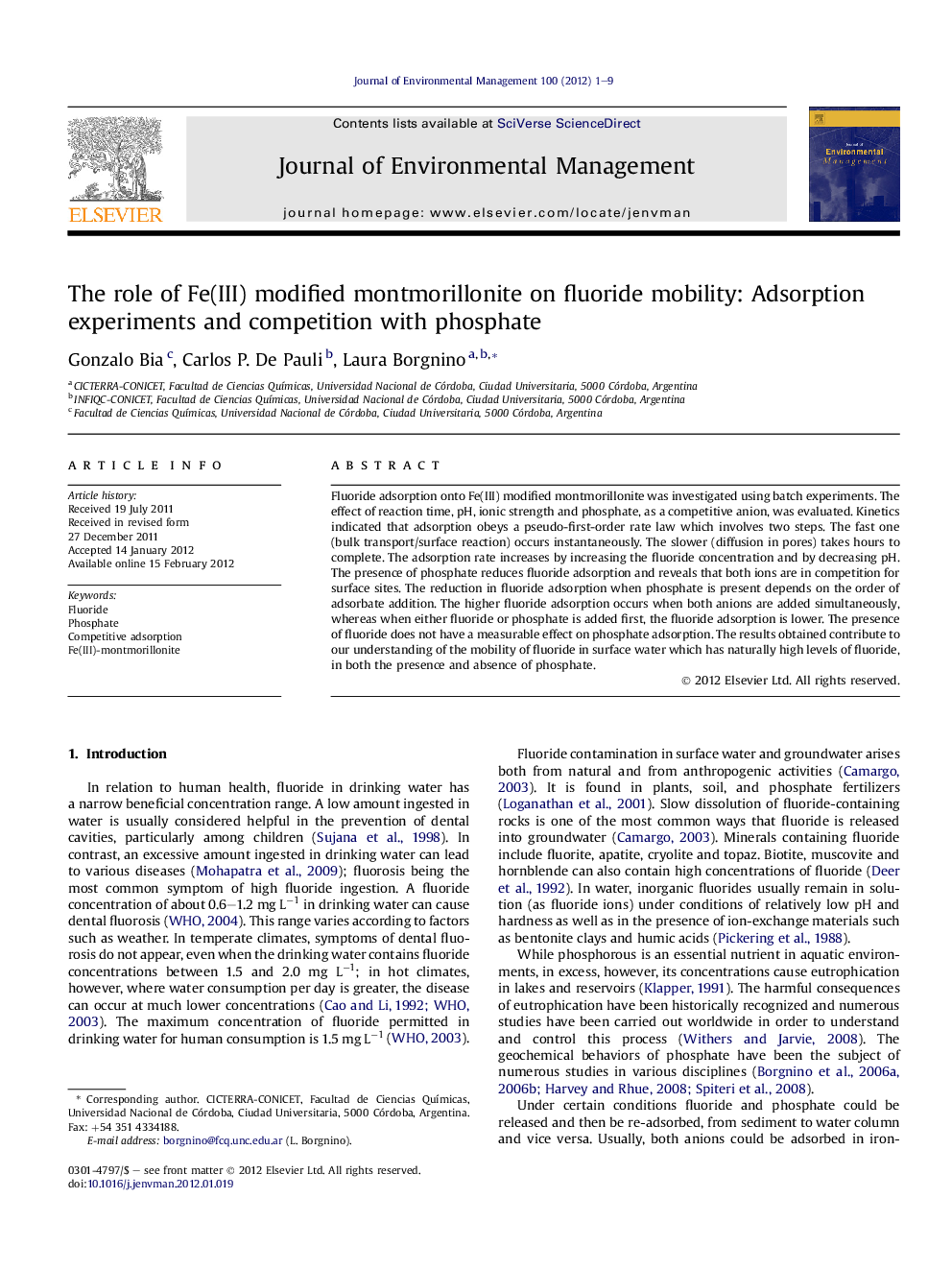| Article ID | Journal | Published Year | Pages | File Type |
|---|---|---|---|---|
| 1056745 | Journal of Environmental Management | 2012 | 9 Pages |
Fluoride adsorption onto Fe(III) modified montmorillonite was investigated using batch experiments. The effect of reaction time, pH, ionic strength and phosphate, as a competitive anion, was evaluated. Kinetics indicated that adsorption obeys a pseudo-first-order rate law which involves two steps. The fast one (bulk transport/surface reaction) occurs instantaneously. The slower (diffusion in pores) takes hours to complete. The adsorption rate increases by increasing the fluoride concentration and by decreasing pH. The presence of phosphate reduces fluoride adsorption and reveals that both ions are in competition for surface sites. The reduction in fluoride adsorption when phosphate is present depends on the order of adsorbate addition. The higher fluoride adsorption occurs when both anions are added simultaneously, whereas when either fluoride or phosphate is added first, the fluoride adsorption is lower. The presence of fluoride does not have a measurable effect on phosphate adsorption. The results obtained contribute to our understanding of the mobility of fluoride in surface water which has naturally high levels of fluoride, in both the presence and absence of phosphate.
► Fluoride adsorption obeys a pseudo-first-order rate law consisting of two steps. ► Fluoride adsorption increases by increasing the concentration and decreasing pH. ► Phosphate and fluoride compete for common Fe-M surface sites. ► Phosphate reduces fluoride adsorption. ► The reduction in fluoride adsorption depends on the order of adsorbate addition.
